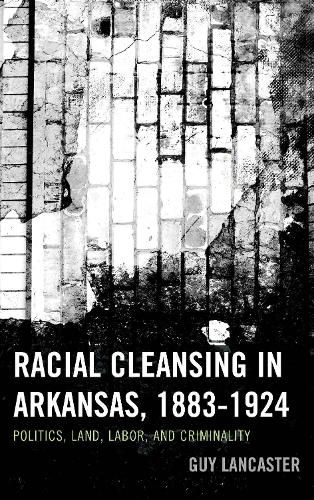Readings Newsletter
Become a Readings Member to make your shopping experience even easier.
Sign in or sign up for free!
You’re not far away from qualifying for FREE standard shipping within Australia
You’ve qualified for FREE standard shipping within Australia
The cart is loading…






Even before the end of Reconstruction in Arkansas, the state already possessed a long-standing reputation for violence, including lynchings, duels, and feuds. However, the years following Reconstruction witnessed the creation of new forms of mob violence. All across the state, gangs of whites sought to drive African Americans from their homes, their jobs, and their positions of authority, creating communities shamelessly advertised as 100% white. This happened not only in the highland regions, the Ozarks and the Ouachitas, where the expulsion of African Americans created so-called sundown towns, but it also occurred in the low-lying Delta lands of eastern Arkansas, where cotton was king and where masked mobs of landless whitecappers and nightriders regularly dealt terror and murder to black sharecroppers.
Racial Cleansing in Arkansas, 1883-1924: Politics, Land, Labor, and Criminality by Guy Lancaster is the first book to examine the phenomenon of racial cleansing within the context of one particular state, illustrating how violence relates to geography and economic development. Lancaster analyzes the wholesale expulsion of African Americans and the emergence of sundown towns together with a survey of more limited deportations, including those with blatant political goals as well as vigilante violence. The book has broader implications not only for the study of Southern and American history but also for a deeper understanding of ethnic and racial conflict, local politics, and labor history
$9.00 standard shipping within Australia
FREE standard shipping within Australia for orders over $100.00
Express & International shipping calculated at checkout
Even before the end of Reconstruction in Arkansas, the state already possessed a long-standing reputation for violence, including lynchings, duels, and feuds. However, the years following Reconstruction witnessed the creation of new forms of mob violence. All across the state, gangs of whites sought to drive African Americans from their homes, their jobs, and their positions of authority, creating communities shamelessly advertised as 100% white. This happened not only in the highland regions, the Ozarks and the Ouachitas, where the expulsion of African Americans created so-called sundown towns, but it also occurred in the low-lying Delta lands of eastern Arkansas, where cotton was king and where masked mobs of landless whitecappers and nightriders regularly dealt terror and murder to black sharecroppers.
Racial Cleansing in Arkansas, 1883-1924: Politics, Land, Labor, and Criminality by Guy Lancaster is the first book to examine the phenomenon of racial cleansing within the context of one particular state, illustrating how violence relates to geography and economic development. Lancaster analyzes the wholesale expulsion of African Americans and the emergence of sundown towns together with a survey of more limited deportations, including those with blatant political goals as well as vigilante violence. The book has broader implications not only for the study of Southern and American history but also for a deeper understanding of ethnic and racial conflict, local politics, and labor history